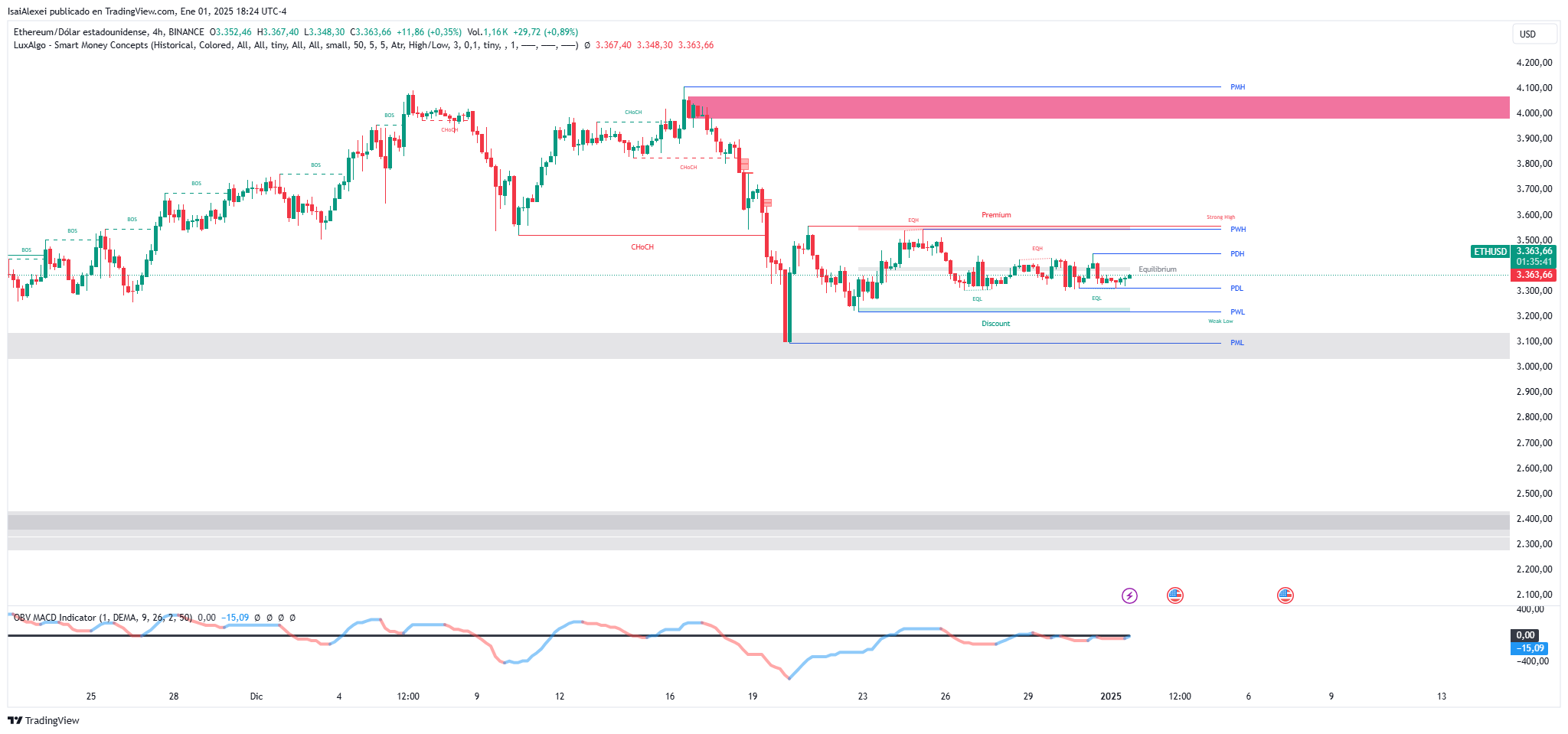- The Pectra upgrade enhances Ethereum’s scalability by introducing blob transactions and optimizing validator stakes for higher efficiency.
- Externally Owned Accounts (EOAs) gain programmability, bridging functionality gaps between basic wallets and advanced smart contract capabilities.
Ethereum is preparing for a transformative year in 2025 with the implementation of the Pectra upgrade, a development designed to enhance its blockchain functionality and scalability.
This upgrade introduces blob spaces and allows externally owned accounts (EOAs) to operate similarly to smart contracts, addressing current limitations in user interaction and network efficiency.
The Pectra upgrade will integrate the largest number of Ethereum Improvement Proposals (EIPs) ever included in a single update. These enhancements aim to resolve existing network inefficiencies, improve the user experience, and establish a robust foundation for future advancements in Ethereum’s blockchain capabilities.
Notably, the upgrade will enable EOAs, traditionally limited to sending and receiving funds, to execute more complex operations akin to smart contracts, significantly advancing the utility of decentralized applications (dApps).
Key Features of the Pectra Upgrade
The validator staking cap will increase from 32 ETH to 2,048 ETH, streamlining operations and reducing network congestion. This adjustment, formalized in EIP 7251, is expected to improve the efficiency of validator nodes and lower energy demands across the network.
EIP 3074 introduces transaction batching and sponsorship capabilities, simplifying wallet functionality and making Ethereum more accessible for new and experienced users. These features aim to enhance adoption and improve usability, particularly for decentralized finance (DeFi) platforms and non-fungible tokens (NFTs).
While Verkle Trees are not included in Pectra, they remain in development for future upgrades. These data structures promise to improve Ethereum’s data storage and retrieval processes, addressing scalability concerns for long-term growth.
Additionally, blob transactions, a core feature of Pectra, will enable the broadcasting of substantial data payloads across the network. This improvement will optimize data storage and reduce transaction costs, benefiting both Ethereum’s mainnet and its Layer 2 solutions.
The introduction of data adjustments through the Consensus Layer further supports Ethereum’s scalability, ensuring the network can manage higher transaction volumes effectively.
The Pectra upgrade also includes plans to increase the maximum stake for validators, a strategic move aimed at consolidating validator numbers and alleviating network congestion. By implementing these changes in phases, starting in Q1 2025, Ethereum seeks to minimize risks and ensure a seamless transition to the enhanced protocol.
Layer 2 Expansion and Enterprise Blockchain
Ethereum’s scalability will benefit from the increasing adoption of Layer 2 solutions like zkSync. These technologies enable faster transaction processing and lower fees, attracting enterprise-level partnerships. Notably, Deutsche Bank is spearheading zkSync-based developments, demonstrating Ethereum’s appeal in the corporate blockchain space.
Market and Institutional Developments
Analysts predict Ethereum’s price could reach $5,925 by the end of 2025, driven by the Pectra Upgrade and rising network usage. Institutional interest continues to grow, with Ethereum-focused exchange-traded funds (ETFs) anticipated to see inflows exceeding $50 billion.
Ethereum (ETH) is currently trading at $3,356.40 USD, reflecting a slight increase of 0.43% in the last 24 hours. Despite this short-term gain, ETH has experienced a weekly decline of 3.32%, consistent with broader trends in the cryptocurrency market.
The trading volume over the last 24 hours stands at $13.36 billion USD, indicating a moderate level of market activity.
Price Movements:
- ETH has traded within a daily range of $3,313.15 USD to $3,362.67 USD, showing limited volatility in the short term.
- The price remains 31.78% below its all-time high of $4,878.26 USD, recorded in November 2021.
Outlook:
Ethereum is likely to trade within the range of $3,300 USD to $3,400 USD in the short term.

A break above $3,400 could pave the way for a test of $3,500 USD, while failure to hold the $3,300 support may lead to a retest of lower levels around $3,200 USD.
Upcoming developments, such as Ethereum’s continued scaling solutions (sharding), could significantly impact its long-term price trajectory.











